Publisher's Synopsis
What are the main parts of a battery? All batteries contain one or more cells, but people often use the terms battery and cell interchangeably.A cell is just the working chemical unit inside a battery; one battery can contain any number of cells. A cell has three main parts: a positive electrode (terminal), a negative electrode, and a liquid or solid separating them called the electrolyte. When a battery is connected to an electric circuit, a chemical reaction takes place in the electrolyte causing ions (in this case, atoms with a positive electrical charge) to flow through it one way, with electrons (particles with a negative charge) flowing through the outer circuit in the other direction. This movement of electric charge makes an electric current flow through the cell and through the circuit it is connected to. That's the theory anyway. Now let's look at it in practice. How does a battery really work? Where does the power in a battery actually come from? Let's take a closer look! Here's my battery hooked up to a flashlight bulb to make a simple circuit. I've unwrapped a paperclip to make a piece of connecting wire and I'm holding that between the bottom of the battery and the side of the bulb. If you look closely, you can see the bulb is shining. That's because electrons are marching through it! Anode and cathode? Now here's what's going on inside. The battery's positive terminal (shown just above my left thumb in the photo and colored red in the artwork below) is connected to a positive electrode that's mostly hidden inside the battery. We call this the cathode. The outer case and the bottom of the battery make up the negative terminal, or negative electrode, which is also called the anode and colored green in the artwork. The paperclip wire is represented in the art by the blue line. Let's quickly clear up one point of confusion. At school, you may have learned that the cathode is the negative electrode and the anode the positive electrode? However, that applies only to electrolysis (passing electricity through a chemical to split it up). Batteries are like electrolysis going backwards (they split up chemicals to make electricity) so the terms anode and cathode are switched around. Okay? To avoid confusion, I suggest it's best not to use the terms anode and cathode at all. It's better to say positive terminal and negative terminal and then it's always clear what you mean, whether you're talking about batteries or electrolysis. Chemical reactions Now back to our battery. The positive and negative electrodes are separated by the chemical electrolyte. It can be a liquid, but in an ordinary battery it is more likely to be a dry powder. When you connect the battery to a lamp and switch on, chemical reactions start happening. One of the reactions generates positive ions (shown here as big yellow blobs) and electrons (smaller brown blobs) at the negative electrode. The positive ions flow through the electrolyte to the positive electrode (from the green line to the red one). Meanwhile, the electrons (smaller brown blobs) flow around the outside circuit (blue line) to the positive electrode and make the lamp light up on the way. The electrons and ions flow because of the chemical reactions happening inside the battery-usually two or three of them going on simultaneously. The exact reactions depend on the materials from which the electrodes and electrolyte are made, and we won't go into them here. (If you want to know what they are, Google the type of the battery you're interested in followed by the words "anode cathode reactions." For example, Google "zinc carbon battery anode cathode reactions.") Whatever chemical reactions take place, the general principle of electrons going around the outer circuit and ions flowing in the opposite direction through the electrolyte happens in all batteries. As the battery generates power, the chemicals inside it are gradually converted into different chemicals.










